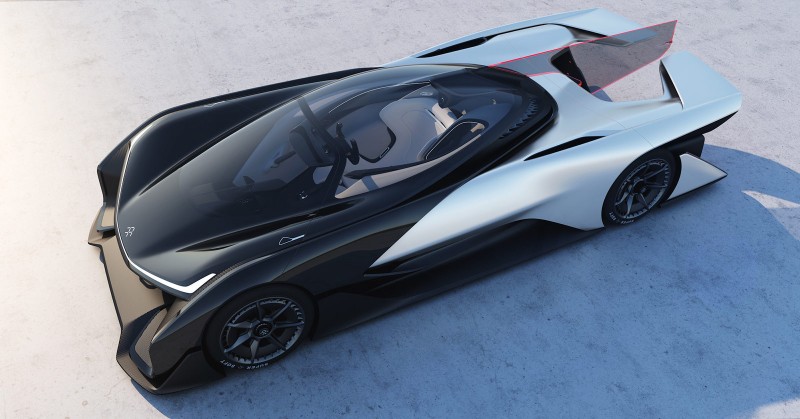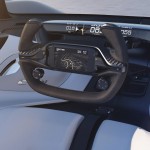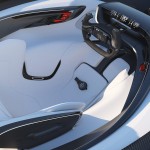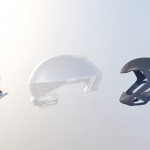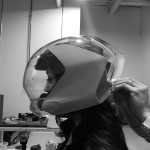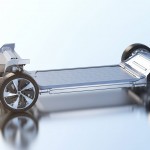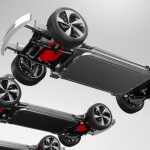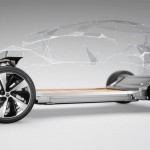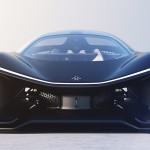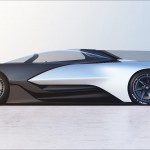The problem with building up hype ahead of a product reveal is that there is a risk of underwhelming your audience. Faraday Future (FF) managed to accrue a healthy social media following as a result of their obsessively secretive nature but the promise of something special. The rumour mill was working at full speed to try and foresee what the fledgling company might produce. Few things were actually known as fact.
Certain key employees were made known publicly, hinting at what kind of car might be built. Designers from BMW i, ex Tesla engineers and so on. Just from that last sentence alone, anyone in their right mind would perk up an ear of interest at what might come from FF.
CES 2016 was also chosen as the venue for their first concept car reveal, clearly indicating the company’s technology direction. Pulling back the sheets to show the FFZERO1 Concept for the first time, Nick Sampson, Faraday Future’s Senior Vice President of R&D and Product Development said: “We’re looking at the future of mobility.” A strong claim indeed for a single seat 1,000 bhp race car.
The car is said to have a user centric approach showing the way FF envisage future production models – which the FFZERO1 Concept is not likely to be. There are lots of “could” in the press release, implying the company still has a long way to go before any of this actually becomes tangible reality. For example, alluded to in both the reveal video and the press release are mentions of autonomous driving, yet FF has not made any progress in this department over any other company… that they have revealed at least.
A neat but unoriginal idea is to use a smart phone as both the dashboard and remote controller for the car, integrating it into the steering wheel (which is like a Formula E race wheel). More novel is the driver’s 45º seating angle, promoting circulation and comfort. Likewise, a prototype helmet that supplies water and oxygen, head and neck support may also gather biometric data about its driver. Quite how long FF expect drivers to be sat in the car is beyond us as there is no mention at all as to what kind of electric range to expect from the car.
However, all this is academic as the FFZERO1 is not likely to be produced. It’s 1,000 hp, sub three second 0-60 mph time and top speed of more than 200 mph is all unlikely to be put to the test. Instead, the car is being used by FF as a learning process and a workshop tool with which the team of engineers and designers can take ideas and inspiration. In fact, a remarkable feat of the car is that it was conceived in just a few short weeks, using virtual reality (VR) tools, augmented reality, parametric design and 3D printing. From sketch to concept was very fast, proving FF’s variable platform architecture that it was built on.
Delving beyond the carbon fibre body reveals more than yet another 1,000 bhp concept car for the super rich. FF’s idea is much like Tesla’s, to use a “Variable Platform Architecture” to quickly offer new vehicles based on a single platform. Tesla has successfully done this with the Model S’ flexible platform that has now also seen use under the skin of their Model X. And it makes a lot of sense. One development cycle is needed to complete a chassis with motors, batteries and all electrical gubbins while leaving a simple plug open to connect to a modular body type that can simply be placed on top. Obviously it isn’t quite as simple as that, but in theory FF’s new architecture could be used to produce a saloon, crossover and sports car all using the same basic platform. FF add that the chassis length can be altered with relative ease too, by simply shortening the rails between the battery “strings”. The latter is a simple solution to offering different battery capacities, which FF say is unlike other EVs on the market today. That’s a half truth as other batteries use modules, but are all stored within a single housing.
Variances of the motor are possible too, with one, two or three motors for appropriate power delivery depending upon the type of vehicle being designed. Suspension setup can be adopted accordingly. All this is nothing new, however, with ideas like these able to trace their routes back to the early days of motoring, albeit FF’s attempt is of course much more up-to-date.
Faraday Future has also announced they will invest $1 billion into their North Las Vegas plant and will create approximately 4,500 jobs. The money comes from a strategic partnership with Chinese LeTV, a company similar to Netflix and who’s billionaire founder is the driving force behind the partnership.
In conclusion, Faraday Future’s reveal has left us with a mixed opinion. On the one hand, their “future of mobility” claim seems to be a little over exaggerated. There’s not a huge amount that is genuinely new here and the FFZERO1 Concept is certainly not a car likely to be the future of mobility for the Everyman. On the other hand, FF’s flexible chassis architecture – the thing they’ve been developing for the past 18 months – is an exciting and credible vehicle for the company to quickly produce new concepts with rapidity and relative ease, yet with the assurance it will perform as they desire, meet legislation and all the other important aspects of car design beyond its looks. FF’s first concept car is in many ways a rudimentary show of strength. It was a way to show the world that the new company isn’t a mythological marketing exercise and is instead ready to make cars. Of course, whether or not they can actually deliver on this promise still remains to be seen but it has left us wanting more and that’s no bad thing. Faraday Future is definitely one to watch, but there are still so many unanswered questions.
